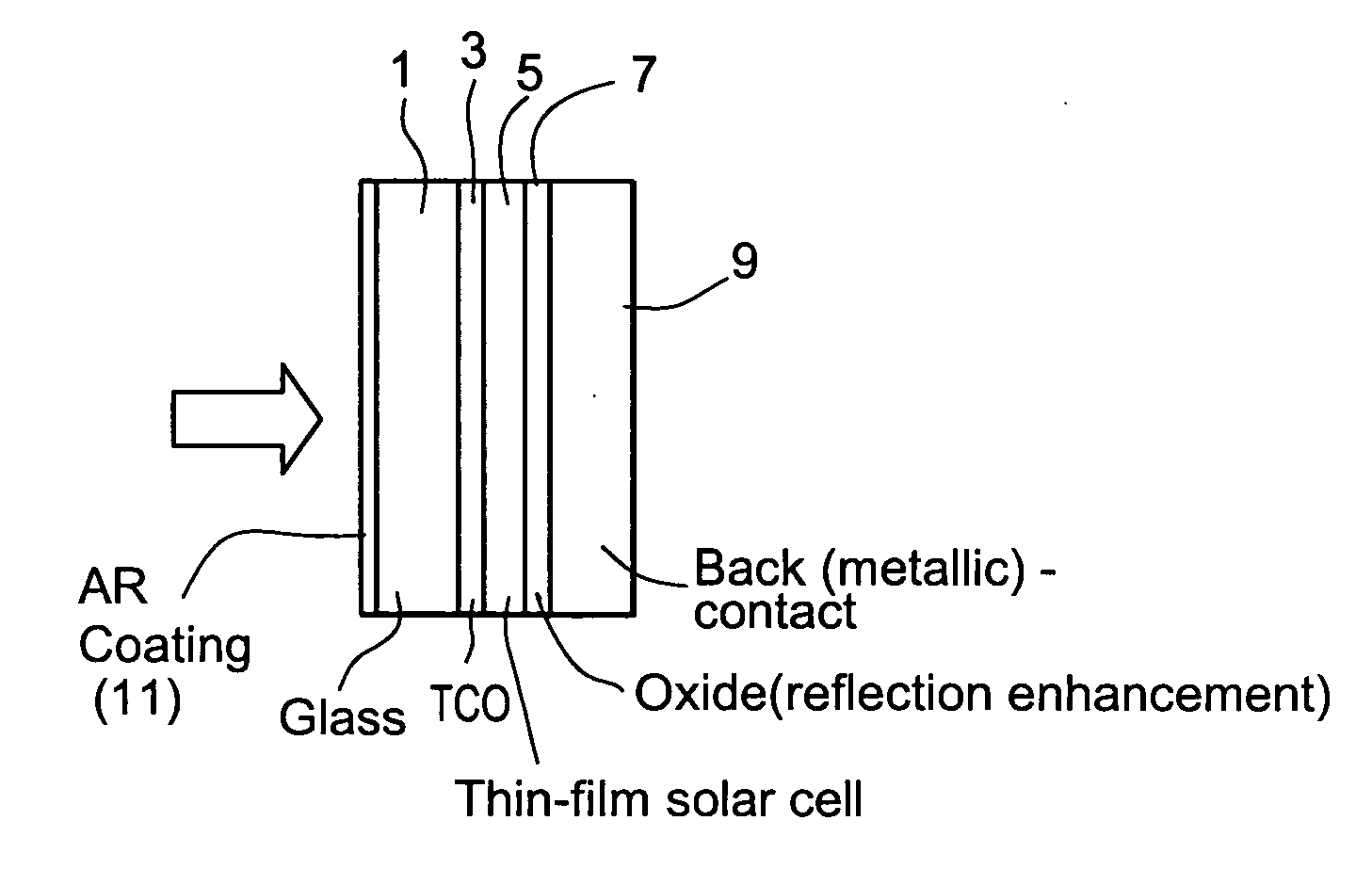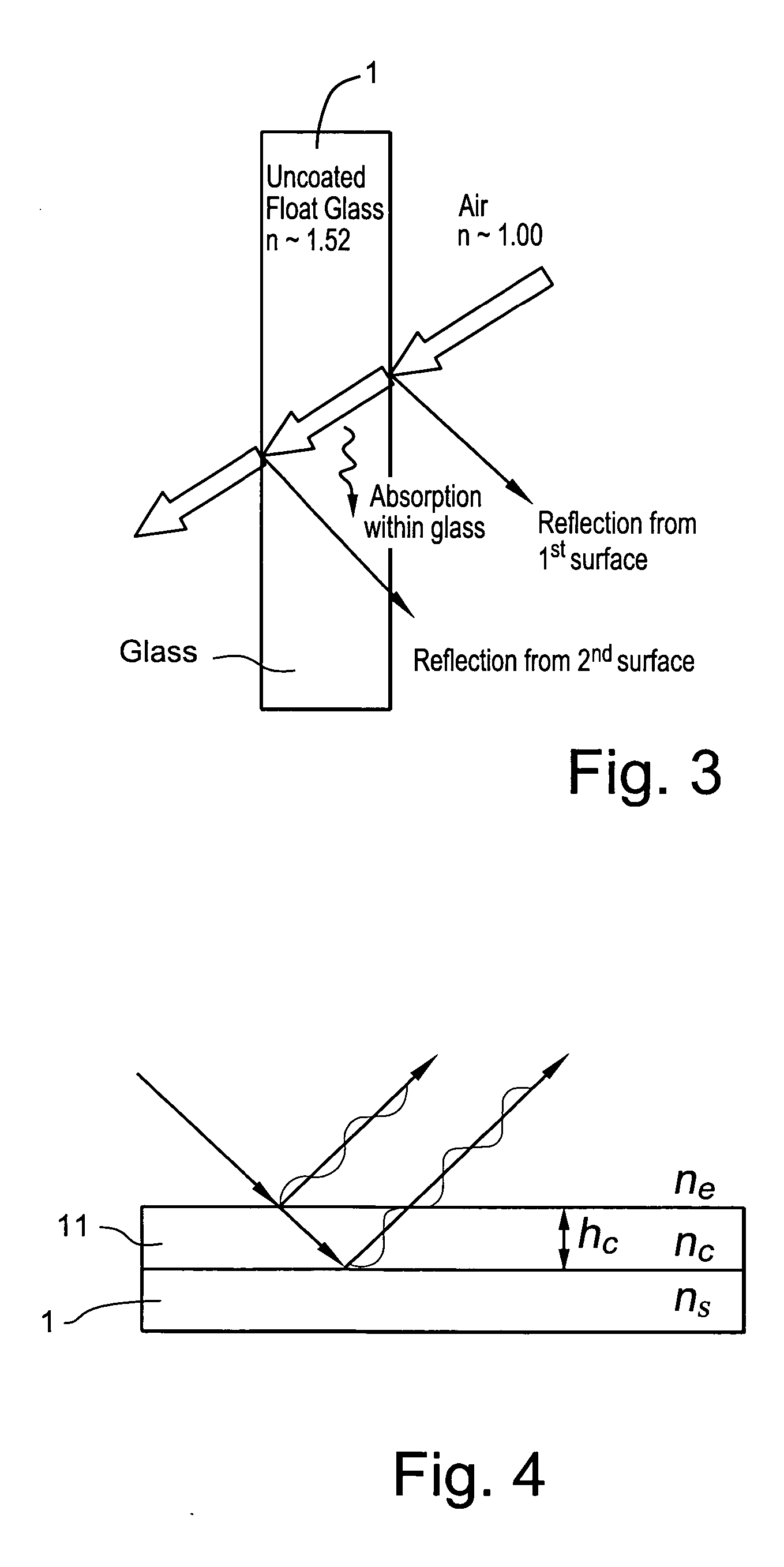Method of making solar cell/module with porous silica antireflective coating
- Summary
- Abstract
- Description
- Claims
- Application Information
AI Technical Summary
Benefits of technology
Problems solved by technology
Method used
Image
Examples
example 1
[0040] In Example 1, a polymeric silica solution (weight %: 64% n-propanol, 24% γ-glycidoxypropyl-trimethoxysilane, 7% H2O, and 5% HCl) was stirred at room temperature for about 24 hours. A colloidal silica solution was used, and in this example is known as MEK-ST silica from Nissan Chemical (weight %: 30% SiO2, 10-15 nm particle size). The coating solution was made by mixing 74% n-propanol, 19.3% of the polymeric silica solution mentioned above, and 6.7% of the colloidal silica solution mentioned above, and stirring the same. This coating solution was deposited on a 3.1 mm thick clear glass substrate (ExtraClear Glass from Guardian Industries Corp.), and was then cured at about 220 degrees C. for about 9 minutes. The sample was then transferred to a belt furnace (max temperature 625 degrees C.), thereby resulting in a coated article including AR coating 11 on glass substrate 1. FIG. 6 illustrates the refractive index (n), as a function of angle, of the AR coating of Example 1. FIG....
example base
GLASS
[0043]
IngredientWt. %SiO267-75%Na2O10-20%CaO 5-15%MgO0-7%A12O30-5%K2O0-5%Li2O 0-1.5%BaO0-1%
[0044] Other minor ingredients, including various conventional refining aids, such as SO3, carbon, and the like may also be included in the base glass. In certain embodiments, for example, glass herein may be made from batch raw materials silica sand, soda ash, dolomite, limestone, with the use of sulfate salts such as salt cake (Na2SO4) and / or Epsom salt (MgSO4×7H2O) and / or gypsum (e.g., about a 1:1 combination of any) as refining agents. In certain example embodiments, soda-lime-silica based glasses herein include by weight from about 10-15% Na2O and from about 6-12% CaO.
[0045] In addition to the base glass above, in making glass according to certain example embodiments of the instant invention the glass batch includes materials (including colorants and / or oxidizers) which cause the resulting glass to be fairly neutral in color (slightly yellow in certain example embodiments, indicate...
PUM
| Property | Measurement | Unit |
|---|---|---|
| Fraction | aaaaa | aaaaa |
| Fraction | aaaaa | aaaaa |
| Fraction | aaaaa | aaaaa |
Abstract
Description
Claims
Application Information
 Login to View More
Login to View More - R&D
- Intellectual Property
- Life Sciences
- Materials
- Tech Scout
- Unparalleled Data Quality
- Higher Quality Content
- 60% Fewer Hallucinations
Browse by: Latest US Patents, China's latest patents, Technical Efficacy Thesaurus, Application Domain, Technology Topic, Popular Technical Reports.
© 2025 PatSnap. All rights reserved.Legal|Privacy policy|Modern Slavery Act Transparency Statement|Sitemap|About US| Contact US: help@patsnap.com



